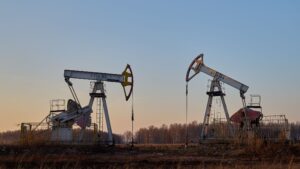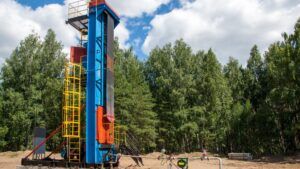Venturing into the multifaceted domain of mineral rights in the United States reveals a landscape as varied as the minerals beneath the ground.
From the oil-rich fields of Texas to the coal-laden mountains of West Virginia, every state has a unique story to tell about its underground treasures and the rights associated with them. In this article, we delve into the depths of mineral rights, an integral yet complex part of property law and land ownership.
What are Mineral Rights?
Mineral rights refer to the entitlements that individuals or organizations hold over the extraction and usage of minerals from the land. Unlike surface rights, which concern the usage of the land’s top layer, mineral rights pertain to the wealth that lies beneath the surface.
Understanding these rights is crucial for anyone involved in land ownership, real estate investments, and the energy sector.
Types of Minerals Under These Rights:
- Hydrocarbons: Including oil and natural gas, these are the most sought-after due to their energy-producing capabilities.
- Metallic minerals: Such as gold, silver, and copper, valued for their use in various industries and as investment commodities.
- Non-metallic minerals: Including coal, gypsum, and limestone, essential for power generation and construction.
How did Horizontal Drilling Impact Mineral Rights in the US?
The advent of horizontal drilling technology marked a pivotal shift in the exploitation of mineral rights. By allowing a single well to access a much larger area of an oil or gas reservoir, this method significantly increased the efficiency and profitability of underground resource extraction.
- Technological Advances: Innovations in drilling techniques have expanded the reach of energy companies, reshaping the mineral rights landscape by making previously inaccessible reserves exploitable.
- Influence on Mineral Rights: With the capacity to drill horizontally, companies can now navigate the subsurface more strategically, affecting the way mineral rights are leased, sold, and managed.
In Which States are Mineral Rights Most Prevalent?
The United States, a vast and geologically diverse country, showcases a multitude of states where mineral rights are a significant part of property ownership and economic development. Understanding where these rights are most prevalent requires a look into the regions enriched with valuable minerals and a history of extraction activities. States like Texas, Oklahoma, and Louisiana have emerged as leaders, not only in energy production but also in the complex market of mineral rights transactions.
Texas
The Lone Star State, where the juxtaposition of Texas mineral rights and surface rights often comes into play, stands out as a leading state for mineral rights ownership. Landowners here are frequently in the unique position of owning the surface while someone else owns the mineral rights beneath their feet—a clear distinction of the “split estate” ownership model.
The mineral rights owner, often a different entity from the property owner, may lease these rights to oil companies, resulting in the landscape being rich with drilling rigs and wells.
- Oil and Natural Gas: Texas is synonymous with oil, its history intertwined with the ebb and flow of the oil industry. The Permian Basin alone is a name recognized around the world for its crude oil production, contributing significantly to the state’s economic prowess.
- Sulfur and Salt: Beyond oil and gas, Texas harbors sulfur and salt as byproducts of drilling, substances with immense industrial value and utility. Their prevalence underlines the state’s mineral wealth beyond the typical oil narrative.
- Coal and Limestone: The energy sector in Texas also relies on coal, despite a global shift towards cleaner energy sources. Alongside, limestone is extensively quarried for construction and industrial purposes, marking a robust mineral ownership landscape.
Oklahoma
Oklahoma mineral rights weaves through its economy like rich seams of ore. Here, the interplay between mineral owners and surface owners is shaped by state laws and historical precedence, with significant implications for land and property owners across the state.
- Oil and Natural Gas: Oil and natural gas reserves in Oklahoma don’t just fuel cars and homes; they fuel the state’s economy and growth. Drilling operations are not merely industrial activities but part of the state’s identity and legacy.
- Coal, Gypsum, and Limestone: In Oklahoma, mineral deposits like coal, gypsum, and limestone constitute a significant portion of the mining sector. These minerals offer a diverse range of uses, from energy to construction, and underline the multifaceted nature of the state’s mineral rights.
Louisiana
Louisiana presents a complex picture of mineral rights, often bifurcated by onshore properties and the vast opportunities lying offshore in the Gulf of Mexico. The state laws provide a framework for Louisiana mineral rights ownership that is distinctive for its integration with the oil and gas industry, which is both a boon and a source of contention among surface owners and mineral owners.
- Oil and Natural Gas: The iconic oil rigs of Louisiana are more than just fixtures on the horizon; they represent the depth of mineral rights’ impact on the state. Royalty interests and royalty payments from these operations often form a substantial part of an individual’s or an entity’s income.
- Salt and Sulfur: Louisiana is also abundant in salt and sulfur deposits, materials that are crucial to various sectors of the industry. The extraction of these minerals, governed by the same principles that apply to oil and gas, adds another layer to the state’s mineral rights tapestry.
Alaska
In Alaska, the narrative of mineral rights weaves through the state’s expansive and often remote landscapes. This region, sprawling and untamed, hosts a myriad of mineral owners and operators who explore and extract valuable resources from its depths.
- Oil and Natural Gas: The North Slope of Alaska is synonymous with oil, particularly with the Prudhoe Bay Oil Field, which historically stands as one of the largest oil fields in North America. The state’s mineral rights in this area are a cornerstone of its economy, with the Trans-Alaska Pipeline System serving as a vital conduit for crude oil to markets.
- Gold, Zinc, Lead, and Copper: Beyond petroleum, Alaska’s mineral deposits are a storied part of its heritage. The state has carved out a significant place in the mineral rights narrative with minerals like gold, which sparked the famous Klondike Gold Rush, and other metals that continue to be mined extensively. Operations like the Red Dog zinc and lead mine and the advancing Pebble Mine project, which is centered around copper extraction, underscore Alaska’s role as a principal actor in the global mining stage.
The Bureau of Land Management (BLM) plays a crucial role in this domain, overseeing vast tracts of public land and the mineral rights associated with them. For many mineral rights owners in Alaska, understanding the interplay between state laws and federal oversight is a critical part of managing their interests.
Wyoming
Wyoming’s vast open lands tell a tale of mineral rights and resources that are deeply interlaced with the state’s identity and economic framework.
- Coal: The state’s Powder River Basin is the heartland of American coal production, with vast reserves that have been a bedrock for energy generation. Despite recent declines in coal demand, Wyoming’s mineral rights in this sector remain a significant state asset.
- Natural Gas, Trona, Uranium, and Bentonite: The mineral rights tapestry of Wyoming is not monochromatic but includes a spectrum of minerals. The state’s natural gas fields contribute significantly to its economy, while trona, a source of soda ash, positions Wyoming as an international supplier. Uranium mining, though less prominent than in past decades, holds potential for future energy needs. Bentonite, with its unique properties, is another key player in the state’s portfolio of mineral assets.
For a property owner or mineral rights owner in Wyoming, navigating the nexus of surface rights and mineral ownership can be a complex process, often requiring a deep understanding of state mineral rights, regulatory frameworks, and the value of their holdings. Royalty interests and lease agreements often form the bedrock of the financial relationships between landowners and operators.
West Virginia
The Appalachian Mountains cradle West Virginia, infusing the state with a rich endowment of mineral wealth that has historically been the backbone of its economy.
- Coal: Coal mining has long been the heartbeat of West Virginia, with generations of families and communities intertwined with the fortunes of the coalfields. The state’s mineral rights landscape is, in many ways, defined by the coal industry, despite the shifts in energy preferences and market demands.
- Natural Gas, Salt, and Limestone: The state’s narrative on mineral rights has evolved to include the burgeoning natural gas industry, buoyed by the Marcellus and Utica shale formations. Salt and limestone also contribute to the diversity of West Virginia’s mineral rights ownership, each playing its role in the wider industrial and economic tableau.
In West Virginia, the interplay between mineral owners, surface owners, and the state is a delicate dance governed by state laws and individual lease agreements. Understanding who owns the mineral rights can be as complex as the subsurface geology itself, with some individuals inheriting mineral rights through complex chains of title and others acquiring them through more deliberate investments.
Pennsylvania
Pennsylvania’s mineral rights landscape is intimately tied to its storied past, where the intertwining of natural resources and industrial progress has been evident since the state’s inception. The Keystone State’s mineral endowments have not only shaped the land but also the economic trajectories of its inhabitants.
- Coal and Natural Gas: The state’s mineral ownership narrative is significantly defined by coal and natural gas reserves. Pennsylvania was once the heart of the coal mining industry, particularly anthracite coal. Today, the Marcellus Shale is synonymous with natural gas extraction, having spurred a modern-day gold rush for energy resources.
- Limestone and Iron Ore: Integral to Pennsylvania’s early industrialization, limestone quarries and iron ore pits dot the landscape, a historical nod to the state’s robust steel manufacturing era. These materials were the backbone of industrialization efforts and remain a part of the active mineral rights landscape today.
Colorado
The topography of Colorado’s mineral rights ownership is as varied as the state’s mountainous terrain, encompassing a wealth of resources that have fueled both local economies and national markets.
- Coal and Natural Gas: Colorado’s energy sector is significantly bolstered by its coal basins and natural gas fields. As mineral owners and operators extract these resources, they contribute to both the state and national energy grids.
- Gold and Molybdenum: The state’s connection with gold stretches back to the Pike’s Peak Gold Rush, and today, mining operations continue to explore and develop gold reserves. Molybdenum, a critical element in steel production, is another key mineral with a storied legacy in the state’s mineral rights history.
New Mexico
New Mexico’s vast landscapes harbor an equally vast potential for mineral rights exploitation, positioning the state as a crucial player in the national energy and minerals market.
- Oil and Natural Gas: The state’s share of the Permian Basin underpins its pivotal role in oil and natural gas production. This basin, a treasure trove of hydrocarbons, provides significant opportunity and revenue for mineral rights owners in the state.
- Copper, Potash, and Uranium: Beyond hydrocarbons, New Mexico is also known for copper mining, a cornerstone of electrical industries, and potash, essential for agriculture. The state also played a historic role in uranium mining, which has left a legacy of both wealth and environmental challenges.
North Dakota
The narrative of North Dakota’s energy sector is one of remarkable transformation, driven by advancements in drilling and extraction technologies.
- Oil and Natural Gas: The Bakken Formation has been a game-changer for North Dakota, establishing it as one of the top oil producers in the country. This surge has significantly impacted the state’s economy and North Dakota mineral rights ownership.
- Lignite Coal: Less known but equally important, North Dakota’s lignite coal reserves are a major player in the state’s energy mix, supporting local power generation and contributing to the broader regional power grid.
Conclusion
This comprehensive exploration into the states with notable mineral rights underscores the complexity and variation across the U.S. It’s a world where technology, like horizontal drilling, constantly redefines the value and management of underground assets.
Stakeholders from mineral rights owners to property owners, and investors to government entities, all play a role in this intricate dance of exploration, extraction, and management.







Leave a Reply